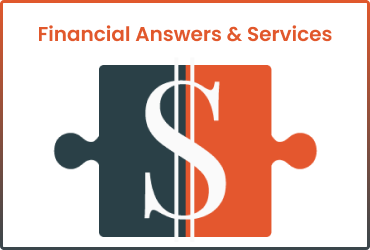Looking for a new job?
Whether you dream about resigning from your current role or applying for your very first career opportunity, you must be realistic. In the job search process, it takes time before landing that first interview.
While more than half of U.S. people expect the whole procedure to last less than 2 months, the average job search takes around 6 months from application to hire.
Of course, it will be much quicker if you try to join your local McDonald’s. In all cases, you should follow a positive, measured, and organized path toward your ultimate objective.
This article will show you how to break down this big goal – finding a new job – into manageable tasks.
Prepare Your Job Search
During the post-COVID-19 Great Resignation, people were quitting their jobs without having a new opportunity in the pipeline. It was due to various reasons like:
- Employee’s desire to work remotely
- Dissatisfaction with the working conditions
- Economic uncertainty
- Employers’ caution
Even for those looking for a new job while still holding one, the job search journey was challenging. Offers could be traps from the current employer to test its staff or the new employer may be willing to hire right away without waiting for any resignation notice. And of course, the job searcher must be careful to only use his personal devices for any application.
Before crafting your resume, consider the two essential preparation steps that we will detail below.
Start with Self Introspection
Take time to evaluate yourself.
First, analyze the circumstances that led you to separate from your former company. Are you looking for a greater challenge? For better conditions? Were you treated unfairly? Have you been hurt in the process?
It will define the reasons why you are looking for a new job. Thus, you could identify what will suit you the best and build up a job search strategy.
Besides, you need clarity on the industry you want to apply for. It may be a familiar one or a new career leap of faith. Are you blue or white collar? Do you aim at a junior or a management position?
Based on this, work on your personal brand. Prepare to pitch yourself to recruiters.
You may need former employer references. If you have a professional network, ping it. Many great jobs never get advertised and word of mouth from friends and colleagues often helps land a dream position.
Do Company Research
Most job searchers browse online portals like Indeed, Monster, or Glassdoor to find a new professional challenge. For directors and above positions, working with a headhunter is a solid option to land a suitable career.
It seems intuitive to reach out to businesses actively recruiting. However, don’t ignore companies that do not communicate about any job openings. They may not be hiring now but giving them a strong impression with an amazing application could open doors.
In all cases, your job search adventure indeed requires good timing. Applying today or next year could have a totally different outcome.
To prepare for the steps we introduce later in this article, do research on the companies you want to apply to. Here is a list of the most important information you should consider when evaluating a business:
- Company values
- Employer branding
- Main business goals
- Company history
- Client profile
- Main competitors
- Market challenges
- Reviews
- PRs (Press Releases)
Visit the company website to collect this data. This online platform best represents the business. You can also check on social media how the business communicates.
With this information in hand, you can move on with your CV (Curriculum Vitae).
Craft Your Resume
A resume is an expression of who you are now and who you wish to be as a valued resource for the company’s future. It reflects what you seek in a job rather than what you believe your employer is seeking.
Thus, you must polish your resume but not overdo it. Keep in mind that recruiters are more looking for a “close fit” than for a “100% good match.” There is no perfect candidate or resume either.
Besides, most recruiters screen CVs in a matter of seconds. Your job (even before getting the job!) is to make the CV appealing, so it passes this first review. You also want to keep it relevant for deeper further consideration.
Follow our simple but efficient two-step guideline below to craft your job application resume.
Write Your Resume Content
You must convince your target company that you are a good fit for this position. Since you did your homework as described in the previous section, you are now ready to produce suitable content to reach this goal.
For now, just write down notes. You will lay out the notes in our next point. You should always focus on the content first, then arrange the visuals and layout, rather than the other way around. In other words, design makes your profile content more engaging. You should not write your resume to fill in a template.
Make sure you consider these crucial resume sections:
- Tagline
- Candidate information
- Achievements
- Employment experience
- Specific skills
A tagline is a 1-line expertise summary like this example: “25-Year-Experience Attorney Specialized in Labor Law.” This is, along with your name and picture, the very first piece of information that the recruiter will grab about you. Make it short, clear, specific, and, of course, honest. Exactly like the subject title of those emails you receive every day, this tagline represents 80% of the entire resume’s value. It helps the recruiter decide if he/she will “open your case” or not.
Provide the necessary information about yourself. Name, mail, email addresses, phone number, etc. Depending on your field, you may also add extra details like a specific driving license or a hyperlink to your (updated) LinkedIn profile.
Now comes the big question: should you include your picture? The answer is yes. It influences the recruiter’s decision significantly. Are you afraid of discrimination in case you are “not that good-looking” or “not of the right skin color”? At this screening stage, you cannot do much against that. However, it would be better for you to get filtered soon if this is a recruiting factor for the company. After all, you don’t want to work for someone who cannot accept you as you are, right?
In the achievements section, list the most game-changing outputs that you have brought to your previous companies. Do this by following the S.M.A.R.T. methodology, for example: “My team of 6 members and I increased the department’s net revenue by +157% year-on-year.” Of course, you may not be able to share confidential data like the exact revenue amount but always include figures to be meaningful. Also, be ready to answer follow-up questions on those achievements during the job interview, as recruiters love them.
You should put your employment history under the achievement section, except if you want to combine both and merge your experiences with your accomplishments. Keep your most recent experiences on top.
If you have none, well, you must start somewhere, right? You could focus on your educational background, degrees, and extra activities you joined. In case you have gaps in your employment history, do not worry and just be honest. Authenticity works, and if it doesn’t, you may be better off without this company. Be ready to answer this interview question: “I see you haven’t been employed during those 2 years, could you tell me why?”
Make sure to add any specific skills that may be relevant to the job. If you have too many, be selective. Include, for example, the languages you speak, the tools you master, your tech stack, your passionate hobbies, etc. This section often helps recruiters differentiate the candidates.
Design Your Resume
Once you are done with the content, you need to put everything together. Here again, depending on your field, you may need to be more or less “flashy.” Select a simple design if you are a top manager. Be more colorful if you are in creative positions. Don’t forget to include a link to your portfolio, if applicable.
If you can create a custom design by yourself, just go for it, as it is the opportunity to show off a piece of yourself. Otherwise, CV resume templates are simple and quick to use.
As you are most likely applying to several companies, you should consider using a unique resume template for each. Of course, do it only if it makes sense. If you apply to two similar companies for which your content is the same, there is no need to complicate the process. However, if you plan to send resumes with different content, it may be smart to customize your design for each.
To polish your resume’s design and format, follow this simple guideline:
- Put your personal information at the top with an emphasis on your name and headshot
- Highlight your tagline
- Shorten your content (avoid full sentences and keep one idea in one line)
- Structure your content with clear section titles in bigger font
- Choose a suitable text font and avoid unreadable fancy ones
- Be congruent in case you use colors (no more than 3 different colors in total)
- Use columns, boxes, and bullet points to ease the reading
- Double-check your grammar
Should you have a 1-page resume or share more information? Both options are great depending on your job application. If the market is competitive and you know that experience will make the difference, don’t hesitate to send a resume with two or more pages. On the contrary, if you expect the recruiter to decide quickly, condense everything into one page only.
Write Your Cover Letter
To answer the question “Should I write a cover letter?”, you must ask yourself “Do I need to demonstrate my interest in this role?”
That’s the whole point of a cover letter. It grants you the chance to personalize your application and showcase some creativity. Most white-collar jobs require them.
There are many ways to write a cover letter. Overall, they must fulfill these goals:
- Show your interest in the job
- Assess your knowledge of the company
- Make you a serious candidate
- Share more about your profile
- Engage with a CTA (Call To Action)
One of the numerous working formulas for writing an engaging cover letter is described below. Remember that you should not blindly follow this example, as a cover letter is unique. Don’t forget to use the information that you collected about the company during the research phase.
Start with a strong opening line to catch the recruiter’s attention. Be specific. Avoid boring and impersonal sentences like “To whom it may concern.”
Then, follow the You>>Me>>Us structure which implies:
- You: talk about the company and its outstanding achievements or employer branding
- Me: have a subtle transition to introduce yourself and explain what you could bring to the business
- Us: finish by mentioning how the company and yourself could do great together
To engage your readers, write a compelling story. A cover letter is nothing more than a narrative in which you share a hero’s journey (yours). Tell the company how you encountered obstacles, how you overcame them, how you learned something new about yourself, and which useful skills you polished.
Don’t forget the CTA at the end of your cover letter. Invite the recruiter to call you, send an email, or schedule a job interview.
Nowadays, job applicants mostly send their cover letters online. However, a few industries still require offline mailing. Adapt yourself to your future employer!
Ace Your Interview
Congratulations! Your dream company scheduled an appointment with you! You passed the first, usually the most selective, recruitment filter! Now, it’s time to finalize your shot.
If you applied to a big corporation, don’t be surprised to have several interviews. Many companies like to evaluate candidates with cross-feedback from different departments. Your first interview may begin with an HR executive, but you can also meet a potential direct supervisor, a top manager, sometimes even a head from a cross-functional department, or a chairman/chairwoman. It depends on the company’s culture and its organizational chart.
Also, more and more job interviews happen online as those remote meetings save tons of time and costs. A few recruiters still insist on managing them in person though.
Anticipate the Job Interview Discussion
Like your resume and cover letter, market research will help you prepare accordingly. Keep in mind that there are four main goals for your job interview:
- Understand more about the company/staff/future department
- Understand more about the job itself
- Have a good picture of the benefits
- Know what the next steps are
To achieve this, you must not only anticipate the recruiter’s questions but also prepare a list of questions that you will ask yourself. The job interview allows you to decide if you could be a good fit in this business. Make a checklist of points that you will cross during the meeting.
If the recruiter plans an online interview, he may record the session. On your side, choose a good background in advance and make sure you are familiar with the technology. You don’t want to learn how to send a crucial URL portfolio by chat during the job interview.
If you want to shine (and you certainly will), get ready to ask about the company’s upcoming plan. Based on your preliminary research, you should have a solid vision of the potential new business strategy or its expected future features. If the recruiter shares about the corporate’s vision, that’s a positive sign for you!
Be a Greater Version of Yourself during the Job Interview
Let’s not join the argument of “Be Yourself!” versus “Don’t Be Yourself!”.
Let’s rather focus on being “Greater Versions of Ourselves” during the job interview, which seems to be a good compromise.
Whether you join an online or offline job interview, follow these hints during the discussion:
- Speak slowly (we all tend to accelerate our speech as we talk)
- Use expressive intonation on important words
- Listen carefully to what the recruiter says
- Avoid humor and jokes (the ones you are not familiar with enough) and be assertive instead
- Control your emotions (don’t forget that work is not the most important thing in your life)
- Be honest with sensitive questions like “what is your greatest weakness?”
If you are interviewing at their office, ask to visit it. It will demonstrate your interest in the job… and test theirs on your application.
Once you have answered all questions from the recruiter, make sure you have crossed out all the questions on your personal checklist. If it is the case, do not forget to thank the person(s) who conducts this interview and shake hands.
Be clear on the next steps. You must know before you leave the room if there will be another interview or when the company will contact you back.
On Your Way to Finding a New Job
What to do after the job interview is done?
You could thank the recruiter by email and confirm that you are ready to share any additional information upon request. Don’t forget that, at this point, you should know “what’s next.”
If the company takes a little longer to get back to you, or is late for the communicated date, do send a polite “reminder email” to ask if there are any updates on your case. If you still do not get any answer, don’t be pushier and just consider you have not been shortlisted. Always keep track of your job hunt’s progress for all applications.
If the company makes an official offer, don’t take it for granted yet! Above all, make sure that all conditions are fine for you. Before confirming anything, you can still negotiate your employment contract and maybe make a “counter-offer” in case you would like to get a little something as an extra.
Be open and do not force your future employer to answer any yes/no questions. Nothing has been signed yet and the company probably has a backup plan in case you become too greedy.
Otherwise, congratulations on your new job!










